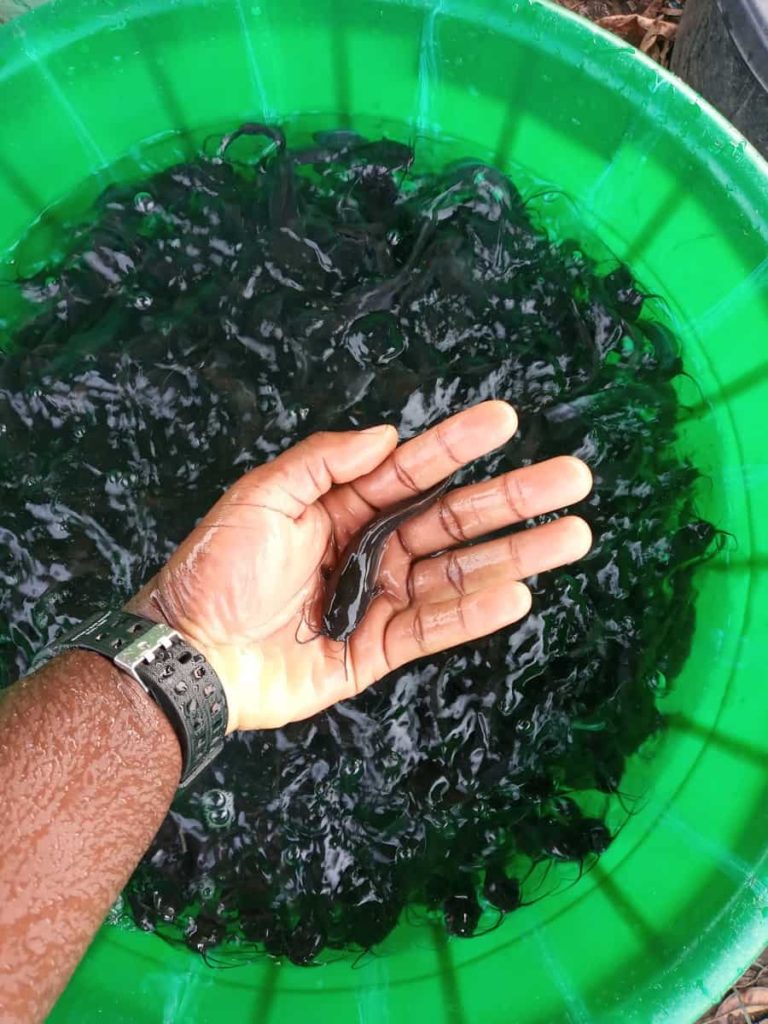RAS is generally known as Recirculating Aquaculture System. RAS fish farming systems are also used for fish production where water exchange is limited, and biofiltration is necessary to reduce toxicity.
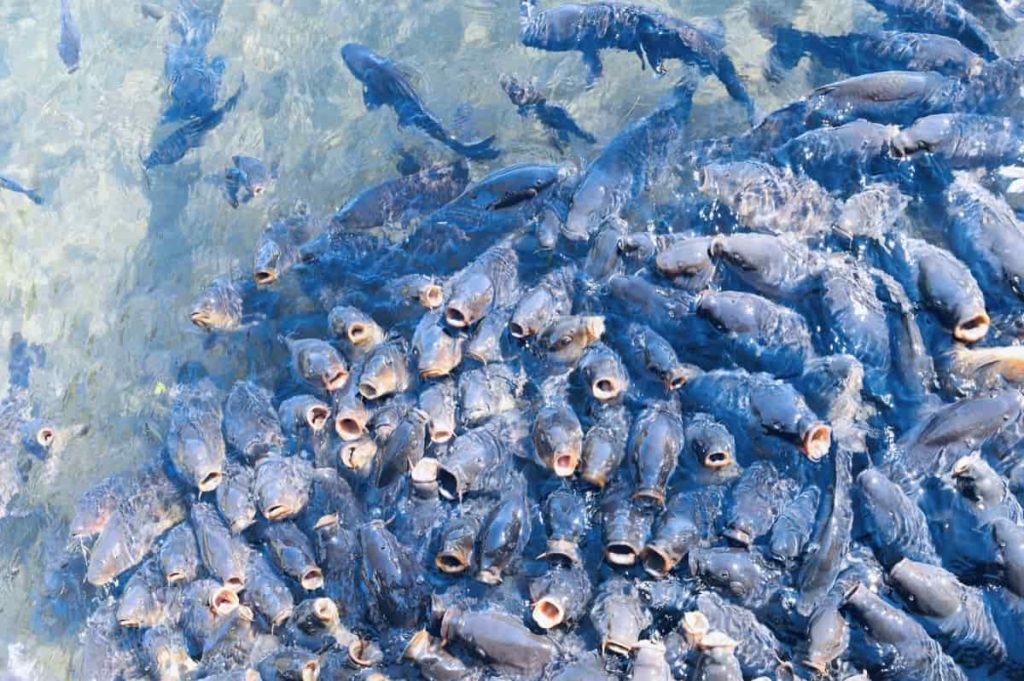
A guide to understand RAS fish farming
What is RAS fish farm?
Recirculating Aquaculture System (RAS) is a technology in which water is recycled and reused after mechanical and biological filtration and the removal of suspended matter and metabolites. This method uses the high-density culture of different fish species, using minimum land area and water. Unlike conventional fish farms based on replacing tank water with freshwater supplies, RAS is intended for fish production locations where water supply is limited.
These systems are used in home aquaria and for fish production where water exchange is limited, and biofiltration is required to reduce ammonia toxicity. While other forms of filtration and environmental control are often necessary to maintain clean water and provide adequate habitat for fish, the main advantage of RAS is the ability to reduce the need for fresh, clean water, while commercial RAS require fish. The stocking density should be high.
As awareness of sustainability and eco-friendly business practices grows, fish farm owners are increasingly opting for a recycling system to ensure a more sustainable and cost-effective way of producing fish. RAS recycles 90 percent of the water and reduces the land area required for fish farms. It involves growing salmon in tanks on land in closed buildings to maintain a highly controlled and safe environment.
RAS promises more sustainable food production with healthier fish, less freshwater use, and shorter transportation distances, as fish can be grown closer to markets. By controlling cultural conditions, aquaculture production in a RAS facility can be established almost anywhere, regardless of local conditions. Shifting production to land can also reduce the scarcity of available space and competition for access to sea areas.
In case you missed it: How to Start Perch Fish Farming: Raising in Ponds, and Cages, A Step-By-Step Guide for Beginners
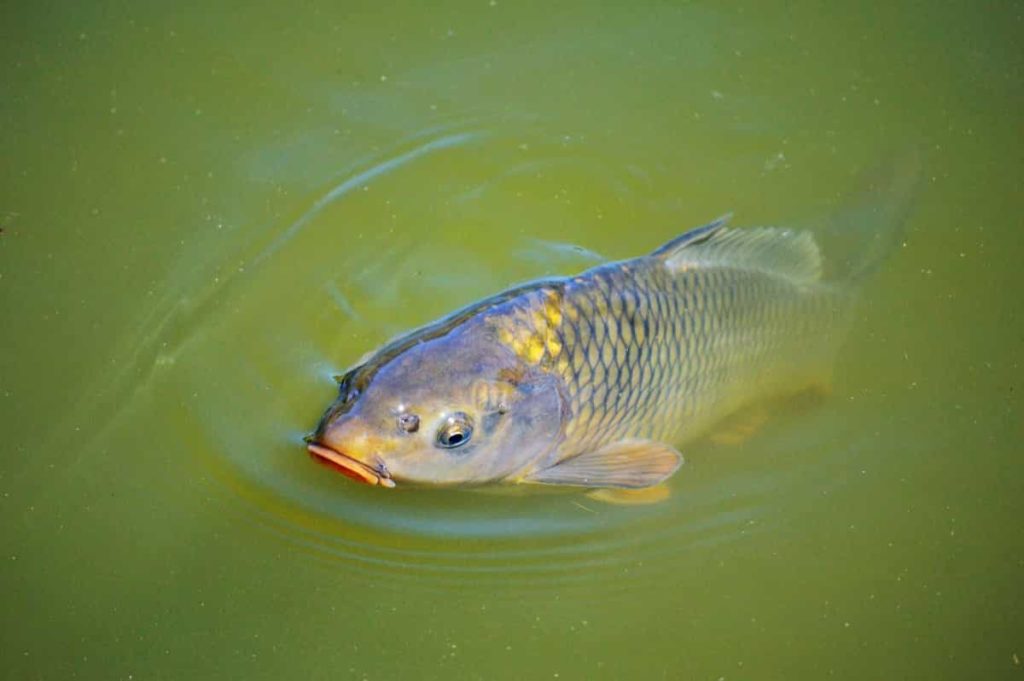
Recirculating aquaculture systems (RAS) work by filtering water from fish (or shellfish) tanks so that it can be reused within the tank. It dramatically reduces the water and space required to produce seafood products. RAS steps include solids removal, ammonia removal, Co2 removal, and oxygenation.
How does the recirculating aquaculture system work?
A recirculating aquaculture system is almost completely closed circuit. The produced waste products, solid wastes, ammonium, and CO2, are either removed or converted to non-toxic products by system components. The clean water is saturated with oxygen and returned to the fish tanks.
Recirculating aquaculture systems (RAS) are land-based aquaculture facilities – either open-air or indoors – that reduce water use by filtering, adjusting, and reusing water. Compared to a traditional pond or open water aquaculture, the water circulation process in RAS makes it possible to control culture conditions and collect waste. In addition, land-based aquaculture avoids escapes and limits the external transmission of diseases and parasites.
Recirculating aquaculture is emerging at an opportune time to meet the demands of the seafood market and the changing needs of land-based farming operations. A Recirculating Aquaculture System (RAS) or Water Recirculation System (WRS) is a high-technology, hyper-intensive type of fish culture system in which the effluent from fish rearing ponds/tanks is continuously treated and returned to the ponds/tanks.
How do I set up a RAS system?
RAS Fish Farming System Setup: The main system is a simple design consisting of a fish tank, biofilter, mechanical filter, oxygen enrichment unit, and UV disinfectant. More facilities are also required, like pH regulators, heat exchange units, denitrification units, etc. It offers alternative production technology to tank-based and pond-based aquaculture technology for nursery culture and farmed finfish. Because recirculating systems typically use tanks for aquaculture production, significantly less land is required.
Although these systems are not completely replacing other land-based technologies, they are finding their way into modern fingerling production for stocking large fish in more traditional production systems. It is a more intensive approach (higher density and more intensive management) than other aquaculture production systems. Instead of the traditional method of raising fish outdoors in open ponds and raceways, fish in this system are typically raised in indoor tanks in a “controlled” environment.
Recycling systems filter and clean the water to be recycled through the fish culture tank. The technology is based on mechanical and biological filters, and this method can, in principle, be used for any species grown in aquaculture. Fresh water is added to the tanks to flush out splash-out, vapors, and waste materials. Reconditioned water is circulated through the system, and no more than 10% of the system’s total water volume is changed daily.
To compete economically and efficiently use the substantial capital investment in recirculation systems, fish farmers need to grow as much fish as possible within the inbuilt capacity. However, backyard recirculation aquaculture systems have been developed to encourage small-scale fish farmers and entrepreneurs and to facilitate fish production in urban and peri-urban areas where land and water are scarce.
What are the major elements in the RAS system?
Tank: Tanks must meet the needs of the fish both in terms of design and environment (usually water flow). For benthic fish (Turbot, Sole, and other Flatfish), tank surface is more important than depth, and water flow rates can be reduced. Other species, such as salmonids, require larger water volumes and a tank design that accommodates higher water flows. Tank design, water current, and fish behavior will also affect organic particle deposition and behavior. Various factors must be evaluated and optimized in the design of a specific RAS system.
pH regulation: The bio-filtering process lowers the pH of the water due to the production of acidic compounds. Water pH needs to be buffered to maintain water quality. Temperature regulation: Fish metabolism, bacterial activity in the biofilter, friction from pumps, piping, and other installations will generate and accumulate heat. The fish growth rate is directly related to water temperature. Different species have different temperature requirements.
The combination of RAS system species and location will affect the need for different temperature adjustment measures. Access to cold water can be used to cool the water. A heat pump or heat exchanger can be used if cold water is insufficient. In cold weather conditions, it can be necessary to heat the water. The heat can come from any energy source connected to the heat exchanger. Monitoring, Control, and Alarms.
All stages of the RAS system must be equipped with sensors to monitor and control the environment, to maintain optimal conditions for the fish at all times. Alarms should also be set to alert when any of the parameters fall outside of the default values. Modern farms often have automatic start/stop processes to try to fix any problems, but no system will work without human supervision. If major failures are imminent, a short response time (often within minutes) is critical.
How is solid waste removed from a recirculating system?
Ammonia, nitrite, nitrate, and phosphorus are commonly dissolved compounds and will require a biofilter, chemical method, or ion exchange system to remove them. Solids can be removed by mechanical filtration.
In case you missed it: Earning 1 Lakh Per Month From RAS Fish Farming: A Success Story From India
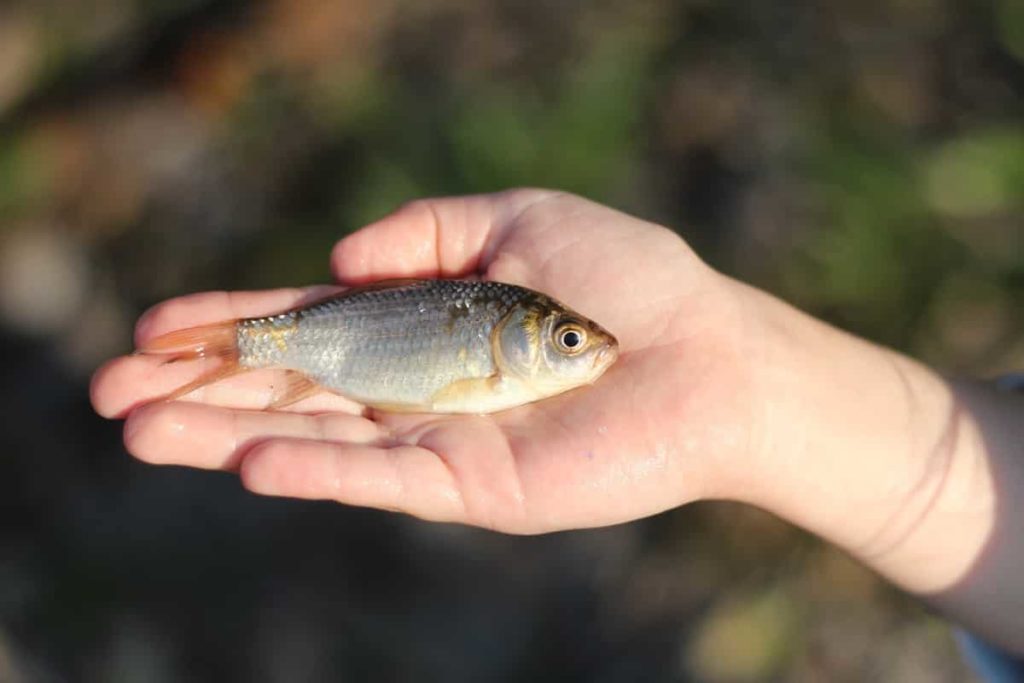
What are the disadvantages of circulating water systems for fish farming?
- For commercial aquaculture, recirculating aquaculture systems have some advantages over other production systems, such as ponds and raceways, and there are disadvantages.
- The main disadvantage is that they are expensive to start up and have high operating costs.
- RAS technology requires a high initial investment as the technology requires a new production plant. RAS technology also has high energy requirements.
- RAS facility is quite expensive. Investment costs are high, and recirculation technology consumes a lot of energy and needs to be controlled and managed by a skilled workforce. Additionally, the technology remains to prove its feasibility for large-scale production, particularly in saline environments. Fish welfare is not necessarily ensured in RAS, and several projects have experienced mass mortality due to design errors or technical difficulties with water circulation. Finally, fish grown in RAS can have a muddy or earthy taste without proper management.
- Most of the operating costs are due to electricity and system maintenance.
- Highly trained personnel are required to monitor and operate the system.
- High greenhouse gas emissions from non-circulating aquaculture.
Is RAS fish farming profitable?
- Overall, the probability of profitable investment of RAS is found to be 99% for both farm sizes.
- With RAS, the key parameters determining profitability are price, yield, fingerling costs, feed, and initial investment.
- Due to the lower cost of sludge disposal and the higher fish density of RAS compared to conventional fish farming, RAS can achieve higher fish yields and profits.
What are the advantages of RAS?
- Fully controlled environment for fish
- Less water use
- Efficient use of energy
- Efficient use of land
- Optimal feeding strategy
- Easy grading and harvesting of fish
- Complete control of the disease
- Recirculating aquaculture systems (RAS) have been developed to overcome pollution concerns and storage capacity limitations of traditional terrestrial aquaculture facilities
- Recirculating aquaculture systems technology offers several significant advantages over other existing aquaculture practices.
- Growing fish in a land-based closed, and controlled environment reduces the risk of disease contamination. The normal production process involves no antibiotics or disease treatments, so the fish produced is healthy.
- Water movement in rearing tanks allows farmers to exercise the fish, resulting in higher natural fat and tissue composition in some fish species. Because RAS technology is not entirely dependent on proximity to a specific water source, the facility can be built closer to the market, resulting in shorter water-to-plate time, and lower transportation costs.
- Another advantage of recirculating aquaculture systems is their advanced filtering capabilities significantly reduce water contamination from feed, waste, and chemical waste, making them an alternative to other aquaculture methods. Makes a much more sustainable alternative. Regarding efficiency and productivity, RAS enables continuous harvest throughout the year, and fish grow to commercial size faster than other aquaculture methods.
- Faster growth usually means better conversion of feed fish mass and recirculating aquaculture systems to maintain full control of water temperature and optimal oxygen and carbon dioxide levels. Thanks to its capacity, there is a lower impact on the production chain and production costs.
How much does a RAS cost?
- A set of RAS devices costs between Rs 30,000 and Rs 50,000.
- A 1000-liter RAS system costs between 3 to 4 lakhs.
In case you missed it: Fish Farming in Kerala – How To Start, RAS, Biofloc
What are the commercial implications of the RAS system?
- Commercial fish farming is land-intensive, and suitable, cheap, or low-cost land is only available in rural settings where large enterprises do not like to invest.
- RAS is a fish culture system best suited to low-density urban environments where wealthy business people live and invest near busy urban markets.
- RAS allows fish rearing at high stocking densities (300 to 350 fish per m2) in indoor and outdoor ponds and tanks compared to 2 to 5 fish per m2 in static (stable) culture systems or flushing. 50 to 100 fish per m2 in the culture system.
- This high storage density in RAS is achieved by water treatment unit operations and deployment of processes such as mechanical filtration, solid waste (sludge) removal, biological filtration (nitrification), water sterilization, and aeration.
Which is better, RAS or Biofloc?
- Overall, recirculating aquaculture systems (RAS) are better for fish farming.
- It costs more than Biofloc, and it is easier to control. A biofloc depends on a biological community of microbes that can be unpredictable.
What species of fish are best for RAS?
- RAS is more suitable for warm water fish such as Channel Catfish, Striped Bass, and Tilapia, which can tolerate lower water quality conditions and temperatures than trout. They are used to raise marine species such as redfish, oysters, clams, and soft-shell blue crabs.
- RAS can be used to grow catfish, carp, shrimp, oysters, and other exotic fish species.
- Barramundi/Asian Seabass/Bhetki
- Cobia
- Silver/Indian Pompano
- Pearl Spot
- Pangasius
- Rainbow Trout, especially in the mountain/cold water area
What are the principles of recirculated aquaculture systems?
The basic principles are based on water treatment technology, which continuously removes waste products and reproduces optimal water quality for fish. Other facilities can be added, like oxygenation with pure oxygen, ultraviolet light or ozone disinfection, automatic pH regulation, heat exchange, denitrification, etc.
Aquaculture of finfish requires a feeding system and a system to remove waste and dead fish. In addition, a RAS system requires pipes. It pumps water transfer between stations, artificial tank lighting, and various sensors and monitoring systems to adjust and optimize the water treatment process.
What are the components of the RAS system?
RAS components are similar to those used in wastewater treatment, including capturing solids and removing nitrogenous waste from excess animal waste and undigested feed. The development of RAS technology and the advantages of flow-through systems have increased the use of RAS, especially in countries that minimize environmental impact and urban areas where space is becoming limited.
RAS is a process by which the environment in an aquaculture culture tank is controlled through water purification and recirculation. Technology has been evolving for more than four decades. Although RAS systems can be expensive, the potential for impressive yields and year-round production in locations close to major markets while using very little water is attractive. In recent years, the salmon industry has adopted RAS to produce large smolts for stocking in production net pens.
- Floating cages – Three cages of 30 m3 each are floated in series in a 90 m3 pond/tank. Cages can be free floating or fixed.
- Source of Aeration – Fish, need as much oxygen as possible to survive. Oxygen can be added to the RAS system by an oxygen generator to maintain adequate oxygen levels at higher storage rates. Aeration pumps will provide both oxygen and water circulation to the tanks.
- Water Quality – Water quality is important, and the following are the optimal range of specific parameters required for successful fish culture in a recirculation aquaculture system.
| Water parameter | Optimum range |
| Temperature | 26 – 30°C |
| Dissolved Oxygen | 4 – 6 ppm |
| pH | 7 – 8 |
| Alkalinity | 120 – 150 ppm |
| Ammonia | <0.05 ppm |
| Nitrite | <0.5 ppm |
| Nitrate | <5 ppm |
What is a biofilter in RAS?
The RAS typically employs a biofilter to control ammonia levels produced as a byproduct of fish protein catabolism. Nitrosomonas (ammonia-oxidizing), Nitrospira, and Nitrobacter (nitrate oxidizing) species are considered the primary nitrifiers in RAS biofilters. Recirculating aquaculture systems (RAS) are unique engineered ecosystems that reduce environmental degradation by reducing the release of nutrient pollutants.
The RAS typically employs a biofilter to control ammonia levels produced as a byproduct of fish protein catabolism. Nitrifying biofilters are an important component of most RAS and a critical determinant of operational success. These biofilters have also been cited as the biggest barrier to RAS start-up and the most difficult component to manage once the RAS is activated. RAS biofilters work to remove nitrogenous waste byproducts from fish protein catabolism and oxidation processes.
Biofilters used in RAS systems can be designed as either fixed bed filters or moving bed filters. All biofilters used in recirculation today operate as submerged units. In a fixed bed filter, the plastic media is fixed and does not move as the water passes through. In a moving bed filter, the plastic media moves through the water inside the biofilter, created by pumping in the air.
In case you missed it: How to Start Fish Farming from Scratch: Check How this Guide Helps Beginners
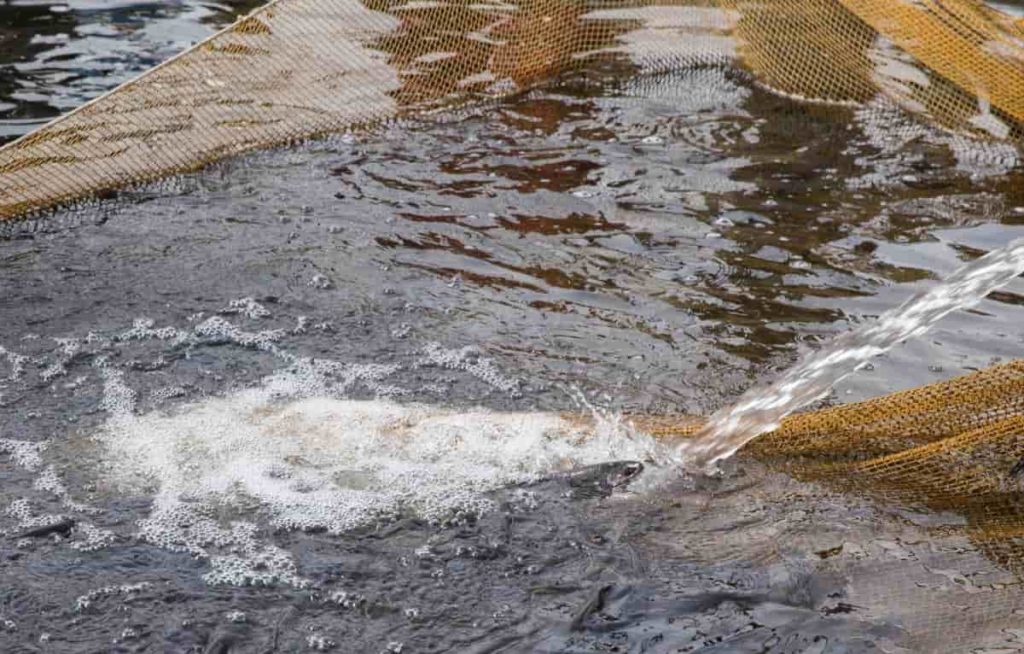
What are the main principles of water recirculation and filtration in RAS?
RAS is designed to minimize or minimize dependence on water exchange and flushing fish culture units. Water is typically reused when there is a specific need to minimize water changes to maintain water quality conditions that are different from the supply water or insufficient water supply. There are numerous designs for RAS, and most will work effectively if they accomplish:
Removal of particulate matter: Water loaded with particles (faecal solids) drains from the fish tanks and collects in the main line. Water from the main line is passed through a micro-strainer or sedimentation tank, where particles above a certain size are removed before the water is pumped to a biological filter.
Biological filtration to remove waste ammonia and nitrate: The biofilter may consist of a submerged section and a trickling section. In a biological filter, the degradation of toxic, organic material (e.g., ammonia to nitrite, nitrite to nitrite) and organic matter occurs through the activity of bacteria living on the biofilter matrix.
Aeration: Water is aerated in the trickling section of the biological filter. Aerators or oxygen cones can also be placed in the recycled water to ensure adequate aeration. Aeration levels should be sufficient to maintain dissolved oxygen levels greater than 60% saturation (5 mg/L) throughout the system.
Buffering of pH – A biological filtration process will result in nitrate build-up and a drop in pH. Therefore, the system has denitrification, pH control, and adjustment facilities.
How does the RAS aquaculture system work?
Every recirculating aquaculture system requires the following basic components for a successful setup.
- Fish pond
- Mechanical filter
- Biological filter
- Pump Tank
- Other equipment (e.g., UV-C light, oxygenation devices, aeration devices, feeders, monitoring, etc.)
A recirculating aquaculture system for purifying water and returning it to fish tanks relies on filters to recycle. Fresh water is only added to the tanks to compensate for water lost due to evaporation or splashing. It contrasts with traditional “open” or “flow-through” systems that allow water to move in and out of fish habitats. Typically this water only passes through the system once before being wasted, whereas the bulk of the RAS water remains in the tank throughout the growing cycle.
RAS-grown fish need to be provided with the same critical conditions to grow and thrive as their conventionally farmed counterparts. They require a steady, continuous supply of clean water at room temperature, a nutritionally complete diet, dissolved oxygen in concentrations high enough for optimal growth, and biofiltration to remove toxic waste products and purify the water.
These elements, when supplied correctly, can lead to fish with rapid growth and high survival rates – ideal for fish farmers’ efficiency, productivity, and profitability. Harvesting is done by using nets that are dragged through the tanks. To prevent further stress on animals as much as possible. Fish are kept inside the purification tanks. It ensures that the “off-flavor” often associated with farmed fish is removed and thus will increase their market acceptance.
Which feed is best for RAS fish farming?
- A high protein feed contains all essential minerals and vitamins.
- Depending on the quality and protein content of the feed, fish can be fed up to 3-5% of their body weight.
- More frequent feeding (several times a day) will result in better growth rates and, thus, a better feed conversion ratio.
In case you missed it: How to Start Fish Farming on Terrace at Home: in Tanks on Small Scale, and a Guide for Rooftop Fish Farming
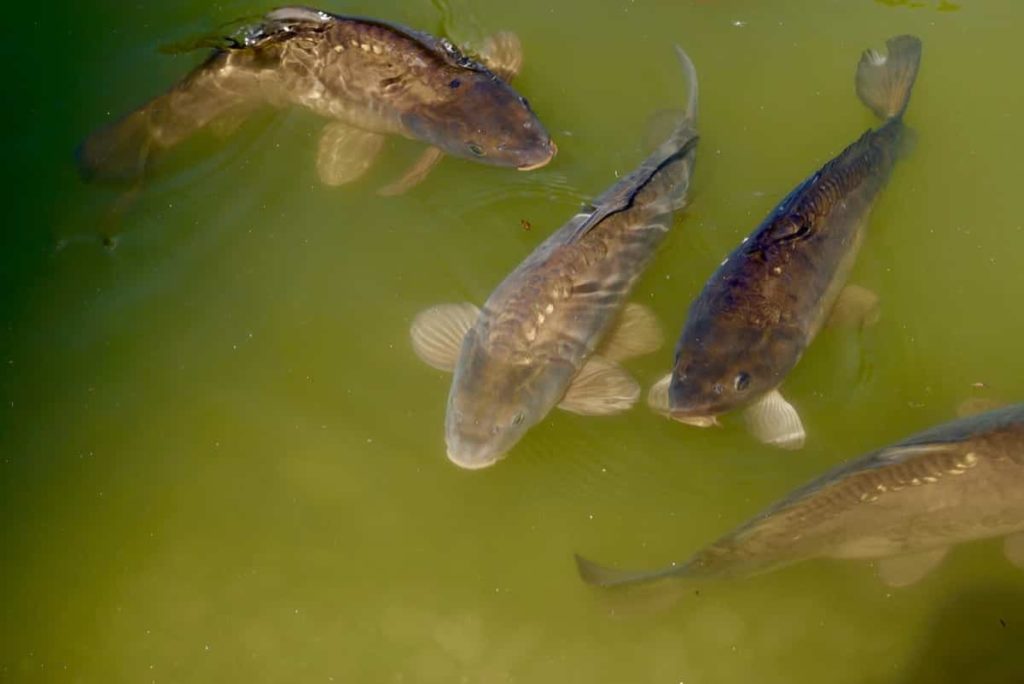
What are the diseases affected in RAS fish farms?
- As fish are kept at higher densities in recirculation systems, they are more prone to stress and disease.
- It is important to constantly monitor the health of the fish because if a disease occurs, it can spread very quickly in the culture tank.
- Fish farmers usually ensure that tanks are isolated from each other to prevent the disease from spreading throughout the system.
Conclusion
Fish grown in RAS must have all the conditions necessary to remain healthy and grow. A filtering (biofilter) system is necessary to purify the water and remove or detoxify harmful waste products and undigested food. The main advantage of the RAS fish farming system is its ability to reduce the need for fresh and clean water while maintaining a healthy environment for the fish. RAS fish farming systems must have high fish stocking densities to be economically and commercially viable.
- Types of Pesticides Used in Agriculture: A Beginner’s Guide
- Economical Aquaculture: A Guide to Low-Budget Fish Farming
- 15 Common Planting Errors That Can Doom Your Fruit Trees
- How to Make Houseplants Bushy: Effective Tips and Ideas
- Innovative Strategies for Boosting Coconut Pollination and Yield
- Pollination Strategies for Maximum Pumpkin Yield
- The Complete Guide to Chicken Fattening: Strategies for Maximum Growth
- Natural Solutions for Tulip Problems: 100% Effective Remedies for Leaf and Bulb-Related Issues
- Revolutionizing Citrus Preservation: Towards a Healthier, Greener Future
- Natural Solutions for Peony Leaf and Flower Problems: 100% Effective Remedies
- Maximizing Profits with Avocado Contract Farming in India: A Comprehensive Guide
- Natural Solutions for Hydrangea Problems: 100% Effective Remedies for Leaf and Flowers
- The Ultimate Guide to Choosing the Perfect Foliage Friend: Bringing Life Indoors
- From Sunlight to Sustainability: 15 Ways to Use Solar Technology in Agriculture
- The Ultimate Guide to Dong Tao Chicken: Exploring from History to Raising
- The Eco-Friendly Makeover: How to Convert Your Unused Swimming Pool into a Fish Pond
- Mastering the Art of Delaware Chicken Farming: Essentials for Healthy Backyard Flocks
- 20 Best Homemade Fertilizers for Money Plant: DIY Recipes and Application Methods
- How to Craft a Comprehensive Free-Range Chicken Farming Business Plan
- Brighten Your Flock: Raising Easter Egger Chickens for Beauty and Bounty
- How to Optimize Your Poultry Egg Farm Business Plan with These Strategies
- Subsidy for Spirulina Cultivation: How Indian Government Schemes Encouraging Spirulina Farmers
- Ultimate Guide to Raising Dominique Chickens: Breeding, Feeding, Egg-Production, and Care
- Mastering the Art of Raising Jersey Giant Chickens: Care, Feeding, and More
- Ultimate Guide to Raising Legbar Chickens: Breeding, Farming Practices, Diet, Egg-Production
- How to Raise Welsummer Chickens: A Comprehensive Guide for Beginners
- How to Protect Indoor Plants in Winter: A Comprehensive Guide
- Ultimate Guide to Grow Bag Gardening: Tips, Tricks, and Planting Ideas for Urban Gardeners
- Guide to Lotus Cultivation: How to Propagate, Plant, Grow, Care, Cost, and Profit
- Agriculture Drone Subsidy Scheme: Government Kisan Subsidy, License, and How to Apply Online
- Ultimate Guide to Raising Araucana Chickens: Breed Profile, Farming Economics, Diet, and Care
- Bringing Hydroponics to Classroom: Importance, Benefits of Learning for School Students
- Ultimate Guide to Raising Polish Chickens: Breed Profile, Farming Economics, Diet, and Care
- Ultimate Guide to Raising Australorp Chickens: Profile, Farming Economics, Egg Production, Diet, and Care
- Silkie Chicken Farming: Raising Practices, Varieties, Egg Production, Diet, and Care
- Sussex Chicken Farming: Raising Practices, Varieties, Egg Production, Diet and Care
